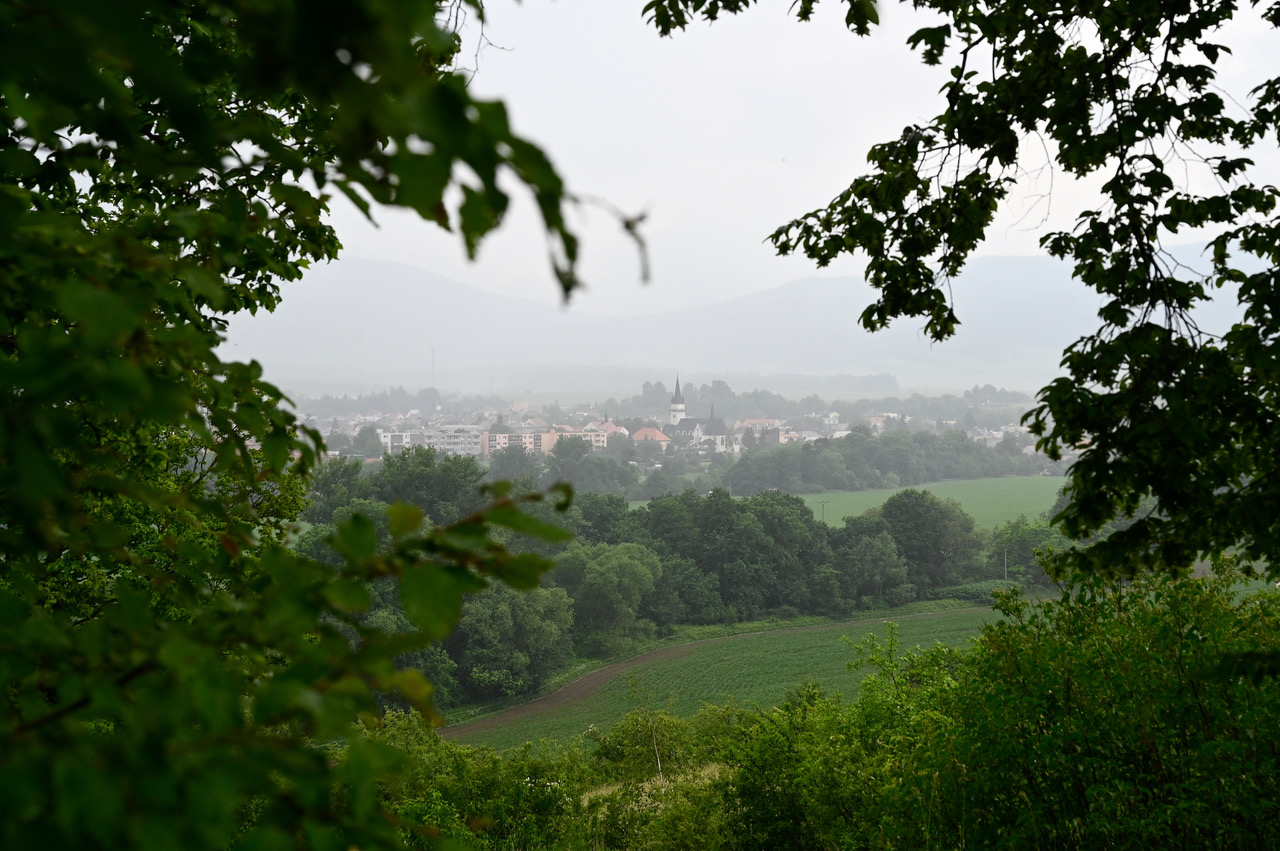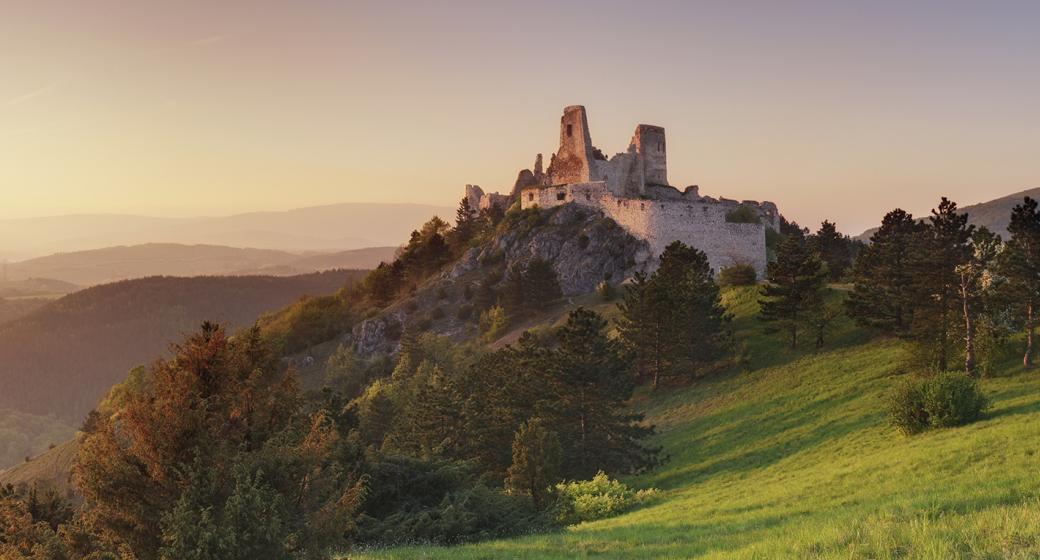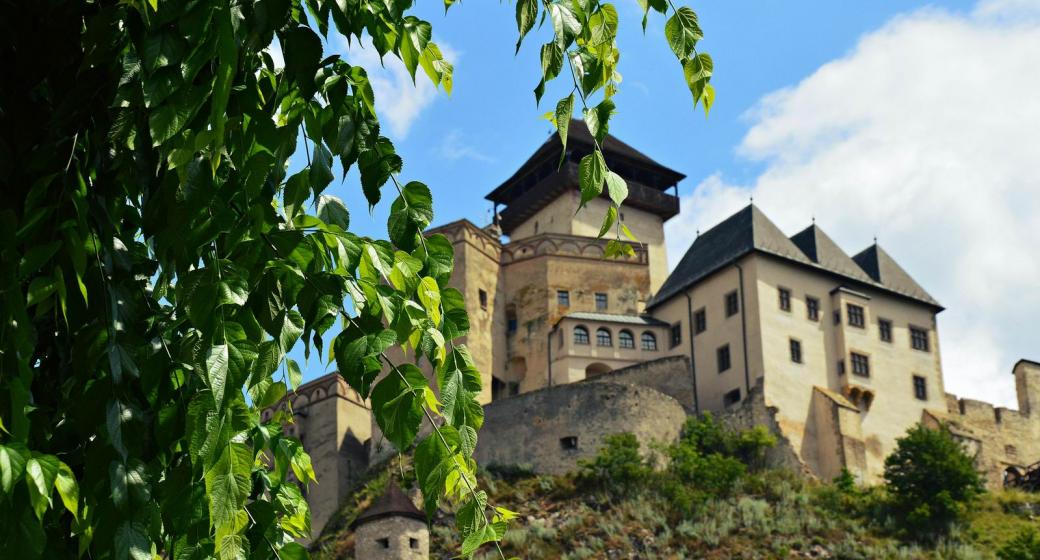


Crossroads, a major artery of the past and present. Nitrianske Pravno is officially a village with three thousand inhabitants, but it has several features of an urban character. From the north, the Nitra River flows through it, which takes Tužinka, the Vyšehrad brook and the Kravská river downstream. It is occupied in the Upper Nitra basin and protected by the Strážovské vrchy, Mala Fatra and the Vyšehrad National Nature Reserve.
Nitrianske Pravno also has two local parts - Vyšehradné and Solka. "In the past they were separate villages, now they belong to us," explained the mayor Andrej Richter, who is proud that Nitrianske Pravno and its surroundings are sought after by visitors from different parts of Slovakia. "We are very happy to have many cultural monuments. There are municipalities where history is not so comprehensive. One of the most recent discoveries is the church in Vyšehrad, which has only been speculated about for years. With new evidence of the site came new research, which is currently underway. It was probably a church on a trade route on a medieval road that divided the two regions, and it is believed that there was also a toll station because several types of coins were found there. Part of the religious space is exposed. The latest information says that it was the Church of the Virgin Mary, which was a branch church of the monastery in Kláštor pod Znievom, "revealed the man at the head of Nitra Pravno.
The site is located in the cadastre of the local part of Solka. "The church is not yet fully accessible. The Horná Nitra tourist club applied for the protection of the environment to run a tourist trail there, but this is not yet allowed. We have these efforts for the future, because it is an important archaeological site, moreover, something really rare in the Middle Ages, "he continued. Several years of the educational event Summer School of Archeology were also held at the given place. "Archaeological research takes three years and the fact that the municipality does not have the finances in the budget to fully implement it and rehabilitate the costs, so it was done using a grant from the Ministry of Culture," Richter said. "There are still undiscovered parts, the so-called monastery. This is a system of several original buildings that are still being explored. It could be the abodes of priests or farm buildings. It is more complicated than it seemed from the beginning, and especially bigger than expected by the initial research, "he added. In the future, after access to the ruins of a church from the 13th century, the village may attract more and more tourists. "It may be attractive to them, but we have to offer it to people in a reasonable way. So that the monument is inadvertently damaged. Now the find is covered with geotextiles, it doesn't look good, "said Mayor Richter.
Tourists are also interested in the location of Vyšehrad Castle itself, which no longer exists. There was always a wooden fort. "It is a very popular locality not only from the Trenčín region, but also from neighboring regions. Various performances take place there - on the feast of Cyril and Methodius or on the New Year. Such a half-day trip there and back. However, it can be done in two or three hours, it is a suitable route for families with small children, "said the mayor.
They could be a city
Nitrianske Pravno owes its development to the mining business, which was closely connected with the settlement of the whole area by German colonists. This historical fact not only influenced the economic-social and cultural-social appearance of the town, but also left significant traces in its architectural construction. At the beginning of the thirties of the 14th century, gold was found northwest of Pravenc. "A large expansion of the settlement was expected. Maybe now we could be a city, such as Bardejov, Kremnica or Levoča. These plans were thwarted because the costs of extracting gold were so high that they were not covered by mining revenues either. But in terms of people, we have always been a city. When they went to Pravno from the surrounding villages, they said they were going to the city, "Andrej Richter recalled the historical milestones. The town hall, where the municipal office is currently located, stands on a beautiful square. "It covers an area of almost 200 square meters. It is one of the largest in Slovakia. Streets face it on every side of the world. There is a Museum of Carpathian German culture and an extremely rare parish church is also interesting. It has a Gothic tower and was completed at the beginning of the 20th century, "he added.
When you head to the local part of Solka, the accompanying boards will take you to Calvary, which rises on a hill and is a National Cultural Monument. There are views of all the surrounding ends. On the west side, it is Magura, which divides the Pravnianska valley from the Rudnianska valley. In front to the north is the promontory of Mala Fatra, Kľak hill. On the east side it is again Vyšehrad. There are 27 objects. In addition to the fourteen regular stops of the Stations of the Cross, there are thirteen other extraordinary chapels. "The first phase of Calvary construction was completed in 1934. It was an era that mimicked historical building elements. The works that are there were selected with great taste. It is not always open, as it is a large location. A lot of people come there during the big religious holidays, but there are also holy masses during the week, "Mayor Richter reminded.
We are already heading along the road to Turiec, in a narrow valley on the right side lies the stream terraced local part of Vyšehradná, which was previously called Majzel. It is named after the Vyšehrad hill and there are objects of traditional folk architecture. Our first stop is a log wooden bell tower from 1805. “It is one of the oldest bell towers of this kind in Slovakia and today it is already unique among similar buildings. The municipality also received the Fénix award from the Ministry of Culture of the Slovak Republic for it as one of the best restored National Cultural Monuments in 2017, “praised the first man of Nitra Law.
The bell tower has been preserved in its original state, but gradually began to fall into disrepair. The shingle roof collapsed, so they replaced it with sheet metal. It was not until 1990 that its more extensive restoration began. They renovated it according to the instructions of the monuments. However, the internal structure was infested with wood-destroying insects and there was a risk that the bell tower would collapse. Finally, they disassembled it and reassembled it. They had to replace up to half of the wooden beams. She received a new dress in 2016 and since then it has been used not only to announce disasters, but also to announce that someone from the village has died.
In the epicenter of ceramics
Through the narrow streets of Vyšehradný we get to a dead end street, where on the right side we discover the house Rastislav Haronik at the serial number 898. It is a small museum of housing, traditional clothing and a pottery workshop. We are welcomed by the owner of the house, the master of folk art Rastislav Haronik.
"I was looking for a house all over central Slovakia, even in Orava. And in the end I found it here, not far from my native Prievidza, "Rastislav Haronik began to tell the story of how he got to the unique building. "Do you see the beauty? It looked even nicer then than it was repaired now. It was smoky, all black from the truss down, "he added with a smile. This is due to the fact that the house has also preserved the original black kitchen, which has a stone vault. "Food is cooked here on an open fire in pots with legs. Few have survived in this form. When it warmed up, it also served as a furnace. The smoke spread freely and through the chimney went into the attic, where it continued to spread freely. The facade was completely smoky. Sometimes I prepare food in the black kitchen, too, "he revealed. He bought the house in 1975. At first only its front part. "Everything else has been razed to the ground. When it fell apart, people took materials to build houses, "said Haronik, who discovered on the facade of the house that it had been built in 1873.
The reconstruction took him almost 20 years. "I gradually glued it, I never had much money. I worked in the old house, I also slept there. There was one room where I had everything. And I gradually built the rest and later remodeled the front of the house, "he added. In 1993, he received the Europa Nostra Prize from the Prince of Denmark for saving the building. "I did not want to save it for an award. That's when they laughed at what I was doing here when I fixed it. My house was cracked, the cracks were opening. They told me we had to make up for it. I say they don't even try, because I'll break their hands. It will be as crooked as it is. The soul of the house is imperfections and I respected that in millimeters, "he continued.
In the house, he devoted himself to his greatest passion - ceramics and pottery. He graduated from the School of Art Industry in Bratislava, Department of Ceramics, and already during his studies he started collecting old jugs. He also met ancient ceramic masters and their work in ÚĽUV. He worked there for 25 years and during this period he was awarded the title of Master of Folk Art Production. "When I landed in Vyšehrad, I started looking for clay around. The irony is that he is not here, but in Pravna it is. There were many potters all over the valley. The clay was never imported, they only made pottery where they mined it, "he added. And so he found the main material he needed for his work, as in Nitrianske Pravna in the past there were very rich deposits of quality clay.
His work is based on traditional ceramics, its color of glazes and clays. In particular, it uses plastic decor, such as a glued chain, and various decorative details, modeled by hand or extruded into molds. Another part of his work is tiled stoves. Recently, he has been working on sgraffito in ceramics. Pravnian potters decorated their products with this technique in the interwar period. They used motifs of Pravnian embroidery for their decoration, from which Haronik also draws. "These are natural motifs, and I appreciate that they were not naturalistic in Pravnian embroidery and applications in ceramics. They were very highly stylized, both in shape and color, "he remarked.
The house hides hidden treasures not only in the form of pottery, but also other folk objects, even old embroidery and costumes. Nitrianske Pravno with Solka and Vyšehradný are another discovered treasure at the end of the Trenčín region.

Malebná zrúcanina viditeľná už z diaľky na vápencovo-dolomitickom kopci poskytujúca…

HISTÓRIA. Na mieste dnešného hradu stálo v období Veľkej Moravy hradisko ako správne…